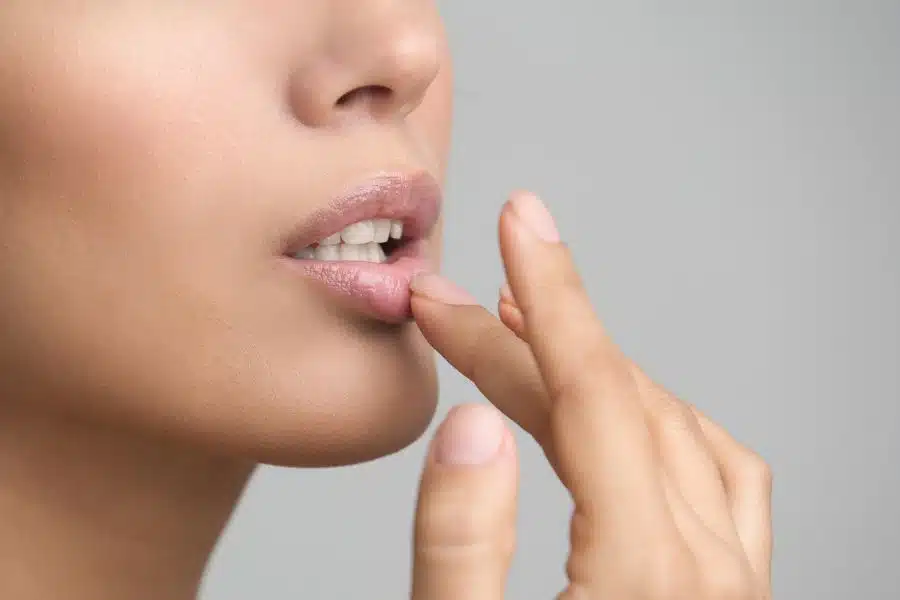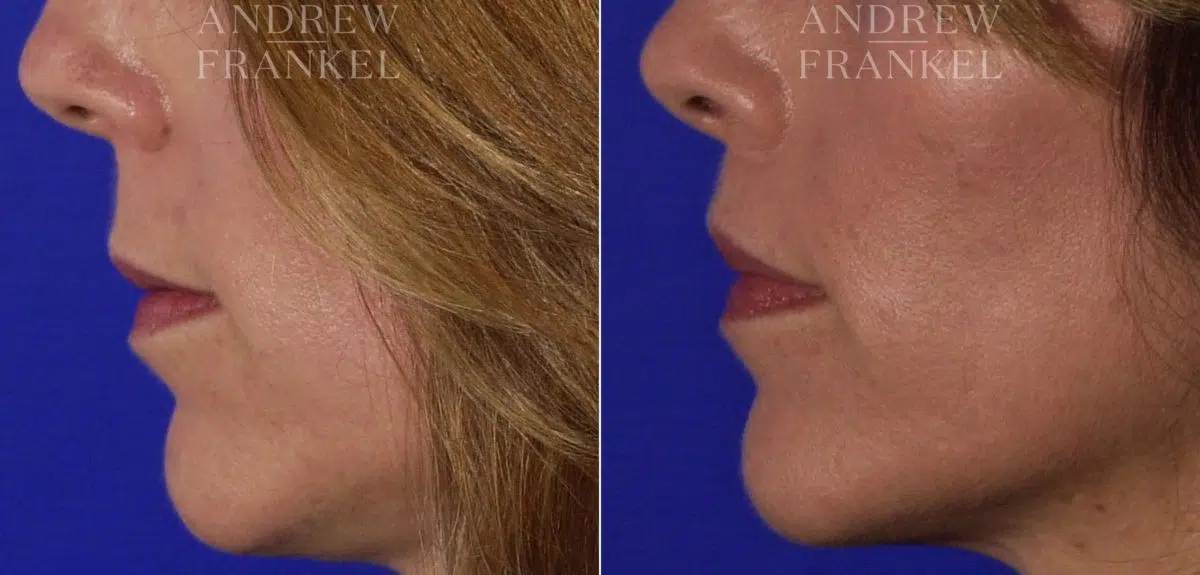
How to Minimize the Appearance of Lip Lift Scars
Scars are a common part of the healing process after a lip lift, but with proper care, they can fade significantly or even become nearly invisible. Proper wound care, sun protection, and the right treatments can help improve the appearance of scars over time. While some fading happens naturally, taking the right steps early on can make a significant difference in long-term results.
Dr. Andrew Frankel, a leading expert in facial plastic surgery, provides trusted insights on minimizing lip lift scars. His extensive knowledge and advanced approach help patients achieve natural-looking results with minimal scarring.
Choosing the right surgeon and proper healing are key to less visible lip lift scars.
Making Lip Lift Scars Less Noticeable
- Choosing an experienced surgeon is the first step to minimizing lip lift scars and ensuring better healing.
- Proper post-surgery care, especially in the first 24 hours, helps reduce swelling and prevent complications.
- Keeping the scar clean, hydrated, and protected from the sun can improve its appearance over time.
- Advanced treatments like scar creams and professional revision options can further reduce visible scarring.
- Long-term care, including healthy habits and follow-ups with your surgeon, plays a key role in scar healing.
What to Expect with Lip Lift Scars and Healing
The lip lift procedure involves making incisions, typically under the nose using the bullhorn technique, to elevate the upper lip, thereby creating a more youthful and contoured appearance. Like any surgical procedure, it results in scars; however, the visibility and prominence of these scars largely depend on the healing process, care during recovery, and individual patient factors. .
Initial Steps for Lip Lift Scar Treatment
Choosing the Right Surgeon
Selecting an experienced surgeon like Dr. Frankel for your initial lip lift surgery is pivotal. A skilled surgeon ensures precise lip lift incisions, minimizing the risk of prominent scarring. Dr. Frankel’s expertise in surgical lip lift procedures and his understanding of aesthetic appearance play a crucial role in achieving a scarless lip lift appearance.
Preparing for Surgery to Minimize Scarring
Preparing for lip lift surgery is important for minimizing the appearance of lip lift scars. Patients should avoid sun exposure before and after the procedure to reduce inflammation and damage to the skin. Additionally, patients should limit their intake of certain vitamins, minerals, and supplements prior to surgery in order to prevent excess bleeding during incisions. Furthermore, patients should stop smoking for at least four weeks pre-surgery and refrain from smoking for several weeks post-surgery to avoid complications that may result in extensive scarring.
Lip Lift Scars: Immediate Post-Op Care
The First 24 Hours: Essential Care Tips
The first 24 hours post-surgery are critical in the lip lift healing process. Your surgeon will recommend minimal movement of the mouth and adherence to prescribed care to reduce the initial swelling and prevent stress on the lip lift incisions. Keeping the head elevated and applying cold compresses can significantly reduce noticeable swelling.
Managing Swelling and Inflammation
Controlling postoperative swelling is a vital step in the recovery from lip lift. Gentle cleaning and application of prescribed ointments are vital to reduce the risk of infection and promote healing. As residual swelling subsides, the true aesthetic appearance of the lip lift becomes more apparent.
Lip Lift Scar Treatment: The First Week
Daily Wound Care and Hygiene
Daily care of the wound site is crucial. Dr. Frankel provides detailed instructions on cleaning the incisions and applying topical treatments. This regimen not only aids in the healing process but also in minimizing the appearance of scars after lip lift.
Monitoring for Signs of Infection
Dr. Frankel stresses the importance of monitoring the incision site for any signs of infection, which can exacerbate scarring. Prompt communication with the surgeon at the first sign of complications is essential for a successful recovery and cosmetic outcome.
Ongoing Lip Lift Scars Management
Scar Minimization Techniques
Beyond the initial recovery phase, there are several techniques to minimize lip lift scar visibility. These include silicone gel sheets, massage, and laser treatments, all of which your doctor may recommend based on individual patient needs.
Importance of Sun Protection
Sun exposure can darken and exacerbate lip lift scars. Use a high-SPF sunscreen on the scarred area and avoid direct sunlight during the peak healing period. This not only protects the scars but also contributes to an elevated appearance of the lip.
Heal the right way with Dr. Andrew Frankel and keep your lip lift scars invisible.
With expert care in Beverly Hills, you can achieve a scar-free, natural-looking result.

Advanced Lip Lift Scar Treatment Options
Topical Treatments and Creams
Topical treatments play a significant role in scar management. Your surgeon will recommend creams and ointments that promote healing and reduce scar visibility. The use of these topical treatments should be as per the surgeon’s advice to avoid any adverse effects on the healing process.
Professional Scar Revision Techniques
In cases where scars are more prominent, Dr. Frankel may suggest professional scar revision techniques. These may include minor touch-up lip lift procedures or laser treatments, tailored to the individual needs of the patient.
Factors Affecting Lip Lift Scarring

Genetic and Lifestyle Factors
Genetic predisposition and lifestyle choices, such as smoking and sun exposure, significantly impact the healing process and appearance of lip lift scars. Understanding these factors helps in setting realistic expectations and planning for optimal recovery.
Impact of Post-Surgical Care
The manner in which patients care for their scars post-surgery greatly influences the final outcome. Dr. Frankel emphasizes adherence to post-operative instructions, which include wound care, avoiding strenuous activities, and attending follow-up appointments, as key elements in ensuring minimal scarring.
Tips on How to Minimize Lip Lift Scars
Long-Term Care and Maintenance
The long-term care and maintenance of lip lift scars play a pivotal role in ensuring a seamless and less noticeable scarring process. There are several additional strategies for patients to incorporate into their routines:
- Consistent Hydration: Keeping the body well-hydrated aids in overall skin health, which can positively affect scar healing. Drinking plenty of water is a simple yet effective step in maintaining optimal skin conditions.
- Balanced Nutrition: A diet rich in vitamins and minerals, especially Vitamin C and Zinc, can promote wound healing and scar minimization. Incorporating a variety of fruits, vegetables, and lean proteins into the diet supports skin regeneration and healing.
- Avoiding Smoking and Alcohol: Smoking and excessive alcohol consumption can impair the body’s natural healing processes, leading to more prominent scarring. Ceasing smoking and limiting alcohol intake are crucial for optimal scar healing.
- Gentle Exercise: gentle exercises, especially those that promote blood circulation without putting stress on the lip area, can be beneficial. Improved blood flow aids in the healing process and can lead to a better scar appearance.
- Stress Management: High levels of stress can negatively impact the body’s ability to heal. Engaging in stress-reducing activities such as yoga, meditation, or gentle walking can be beneficial for overall well-being and skin health.
- Regular Moisturization: Keeping the skin around the lip area moisturized can prevent dryness and aid in the flexibility of the scar tissue. The use of a hypoallergenic moisturizer can be a part of daily skincare.
When to Consult a Professional
It is important for patients to remember that each individual’s healing process is unique, and what works for one person may not work for another. Regular consultations with Dr. Frankel or a skincare professional can help in tailoring a scar minimization plan that is specific to an individual’s needs. He might advise when it might be appropriate to consider additional treatments or interventions for scar management.
With the right care and expert guidance, you can make your lip lift scar much less noticeable. Healing well isn’t just about the surgery—it also depends on how you take care of your skin and follow post-op instructions. By sticking to good habits and following your surgeon’s advice, you can get the look you want with little to no visible scarring.
Taking Care of Your Lip Lift Scar
Healing after a lip lift takes time, but with the right care, scars can fade and become less visible. Dr. Frankel emphasizes that patience and proper aftercare are just as important as the surgery itself. Staying consistent with wound care and following your surgeon’s advice will help you get the best results.
A lip lift can enhance your appearance, but managing scars is a key part of the process. With expert guidance and the right approach, you can heal smoothly and confidently.


